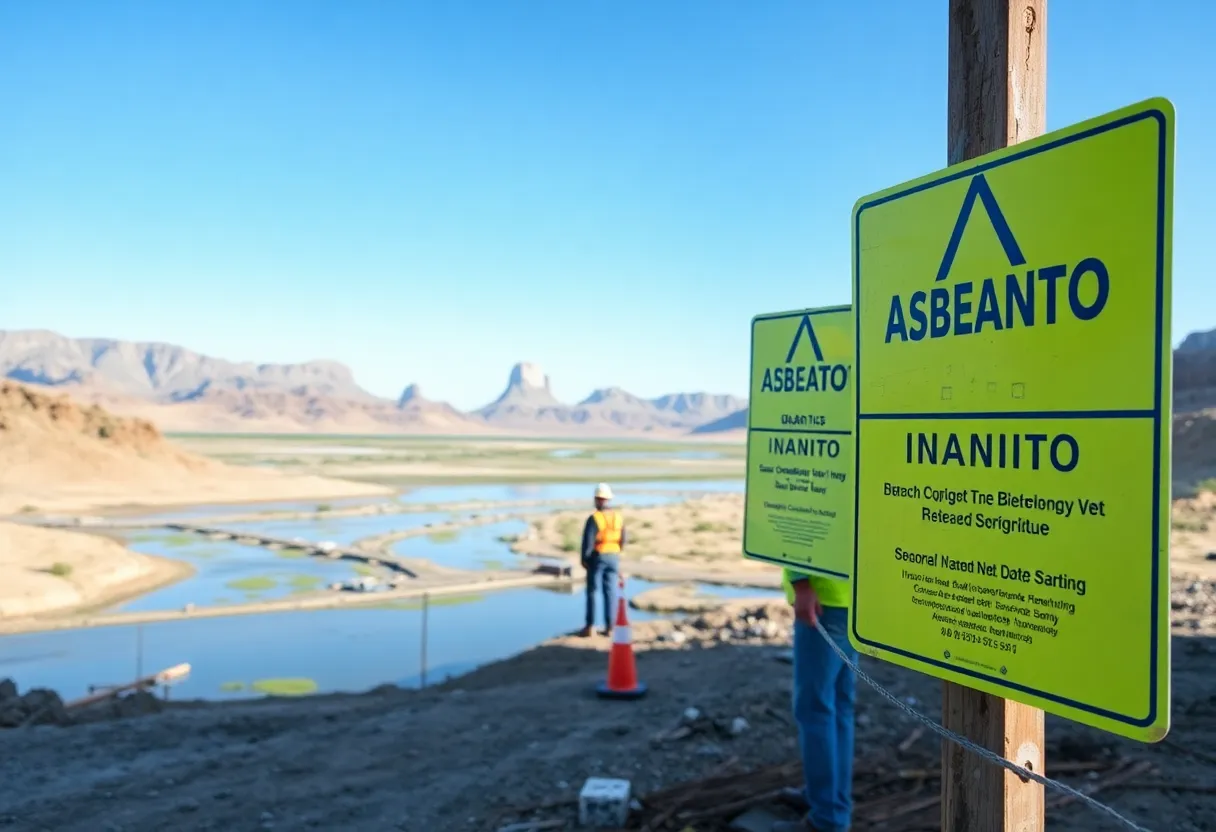News Summary
Asbestos Scandal Erupts at Long Beach’s Colorado Lagoon Construction Site
The Colorado Lagoon in Long Beach, California, is embroiled in a serious controversy following the unearthing of asbestos-contaminated dirt by a construction crew undertaking an environmental restoration project. Workers digging a new channel to connect the lagoon to Alamitos Bay made the shocking discovery near Fire Station 14, leading to increased scrutiny of safety practices on the site.
Workers Expose Dangerous Conditions
Two workers from Reyes Construction have come forward, alleging they were ordered to ignore hazardous materials they excavated. The pair, who were subsequently fired, filed lawsuits against their former employer, claiming wrongful termination after reporting the dangerous conditions. These claims raise alarming questions regarding the safety protocols in place at the construction site.
Escalating Safety Concerns
For months, the crew had expressed concerns about the hazardous debris they encountered, which required proper removal under environmental regulations. Escalated complaints were reported to their employer as well as environmental and work safety regulators in mid-October, setting off a chain reaction of investigations. An independent asbestos consultant confirmed the presence of contaminated dirt, which contained dangerously high levels of asbestos at a nearby disposal pit.
Authorities noted that the presence of asbestos in the lagoon area is not unusual, attributing it to past construction practices. However, city officials maintained that they were following mandated cleanup procedures with every discovery of asbestos. This virtual acceptance of contamination adds another layer of complexity to the project’s future.
Improper Handling and Worker Risks
Adding to the woes, workers reported that they were not provided with adequate *protective equipment* such as suits or masks when dealing with the hazardous materials. Complaints filed with regulatory authorities, including the South Coast Air Quality Management District and Cal OSHA, cite incidents of asbestos-lined transite pipes and contaminated dirt being improperly handled—either reburied or stockpiled without proper mitigation measures.
When complaints led to a temporary halt of the construction project, it resumed under new safeguards in November. Nevertheless, concerns remain that substantial amounts of hazardous material remain buried beneath the site, which could pose future health risks to both workers and the community.
Costly Delays and Legal Battles
The Colorado Lagoon restoration project has incurred over $600,000 in additional expenses due to required asbestos surveys and cleanups. Workers who were exposed to these dangerous conditions are now entangled in legal battles, seeking hazard pay amounting to $7,600 each after their unexpected termination post-complaint.
The Broader Impact of Asbestos Exposure
Exposure to asbestos can have serious health implications, including increased risks of developing cancer. This is particularly worrisome given the long history of asbestos use for its heat resistance before widespread bans were enforced in the 1970s and 80s.
State laws dictate that only licensed contractors can handle asbestos remediation, ensuring that stringent standards are maintained during these operations. The ongoing situation emphasizes the need for enhanced oversight in construction projects, especially those in historically contaminated areas.
Additional Concerns in Long Beach
Meanwhile, a proposed ballot measure—Measure AC—is on the horizon for the Long Beach Community College District. This nearly $1 billion bond includes funding for various improvements, with earmarked financial obligations ensuring that no funds are misused for personnel costs. However, amidst the ongoing asbestos scandal, the necessity for accountability in funding and project management is more vital than ever.
As Long Beach navigates this unfolding scandal, the implications of ignored hazards and the pressure to cut corners pose a significant risk to the wellbeing of its residents and workers alike. The situation echoes a larger national concern regarding proper safety measures and regulation in construction involving hazardous materials, demanding prompt action and transparency.
Deeper Dive: News & Info About This Topic
HERE Resources
U.S. FDA Proposes Asbestos Testing for Talc in Cosmetics
Global Asbestos Crisis: Unmasking the Deadly Dangers
FDA Proposes Stricter Asbestos Testing for Talc-Containing Cosmetics
New Mesothelioma Lawsuit Filed Against Johnson & Johnson
Mesothelioma: Alabama’s Fight Against Asbestos Exposure
The Rising Tide of Pleural Diseases: An Alarmingly Growing Health Concern
Uncontrolled Wildfires in Southern California Trigger Mandatory Evacuations and Health Alerts
Revolutionizing Mesothelioma Treatment: The Rise of Opdivo
Connecticut Jury Awards $15 Million for Asbestos Case
Major Wildfires Ravaging Los Angeles: A Hidden Asbestos Threat Emerges
Additional Resources
- Long Beach Post: Asbestos Scandal at Colorado Lagoon
- Wikipedia: Asbestos
- Long Beach Current: Measure AC for Community College District
- Google Search: Asbestos Exposure Health Effects
- Press-Telegram: Expensive Toxic Nightmare
- Google Scholar: Asbestos Remediation Practices
- Asbestos.com: Long Beach Naval Shipyard
- Encyclopedia Britannica: Asbestos



















